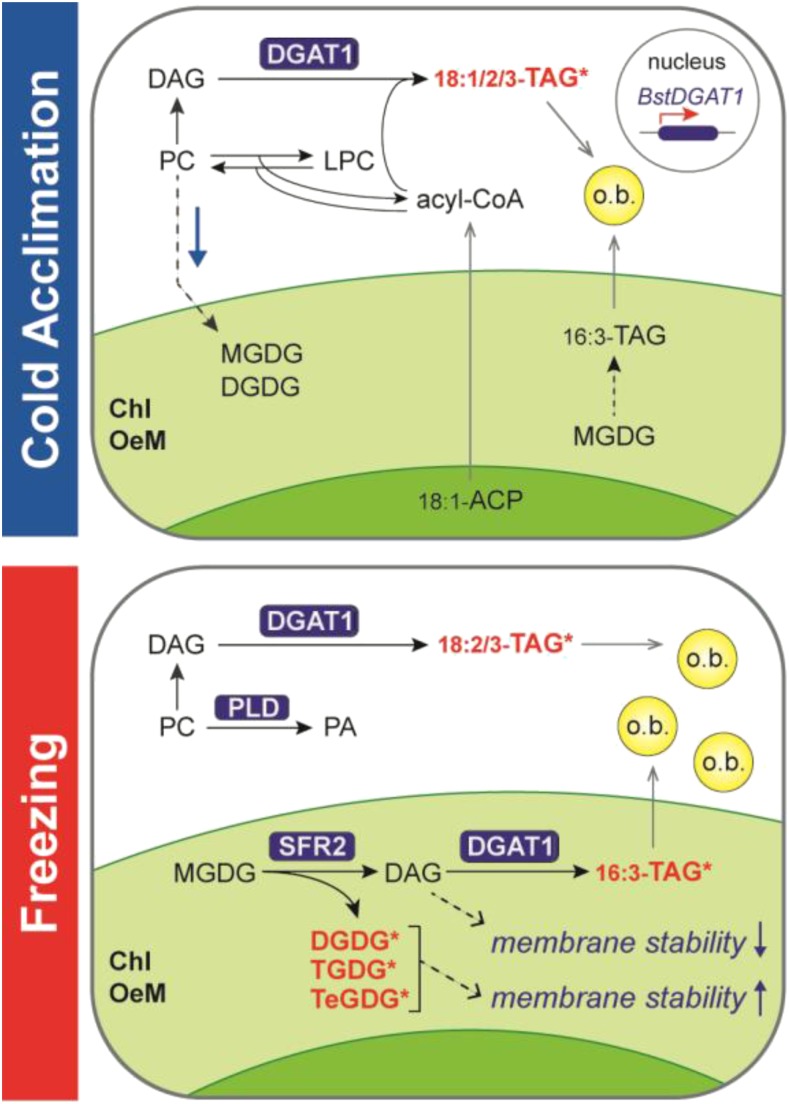Figure 10.
Model of DGAT1 function in B. stricta seedlings in response to cold acclimation and subsequent freezing. During cold acclimation (top panel), BstDGAT1 is transcriptionally upregulated. As low temperature reduces the requirement for eukaryotic galactolipid biosynthesis (blue arrow), excess PC is converted to DAG and subsequently acylated to 18:1-, 18:2-, and 18:3-rich molecular species of TAG. Simultaneously, turnover of MGDG in the chloroplast results in accumulation of low amounts of 16:3-containing, chloroplastic TAG. In contrast, in response to freezing (bottom panel), high amounts of 16:3-TAG accumulate, together with oligogalactolipids DGDG, TGDG, and TeGDG, suggesting concomitant activation of SFR2. DGAT1, which is most likely coresident with SFR2 in the chloroplast outer envelope membrane (Chl OeM), is suggested to use SFR2-generated DAG as acylation substrate and promote chloroplast membrane resilience during freezing by removing membrane destabilizing DAG molecules, while allowing SFR2-mediated synthesis of membrane-stabilizing DGDG, TGDG, and TeGDG. Our study of natural variation in B. stricta ecotypes has identified BstDGAT1 as a candidate QTL locus for freezing survival and found firm positive associations of freezing tolerance with acclimation-induced BstDGAT1 expression and accumulation of TAGs and oligogalactolipids during freezing. The associated differential activities of DGAT1 and SFR2 support their proposed functional link underlying an adaptive mechanism of freezing tolerance. Freezing also induces PC hydrolysis to PA, presumably by PLD activity, which correlates negatively with freezing tolerance in B. stricta ecotypes. DAG acylation reactions indicated outside the chloroplast are localized to the ER or to the chloroplast outer envelope membrane. TAGs are contained in cytoplasmic oil bodies (o.b.). Lipids with significant genotype-by-treatment interactions that positively associate with freezing tolerance are indicated in red and by asterisks. (L)PC, (lyso)phosphatidylcholine; ACP, acyl carrier protein.

